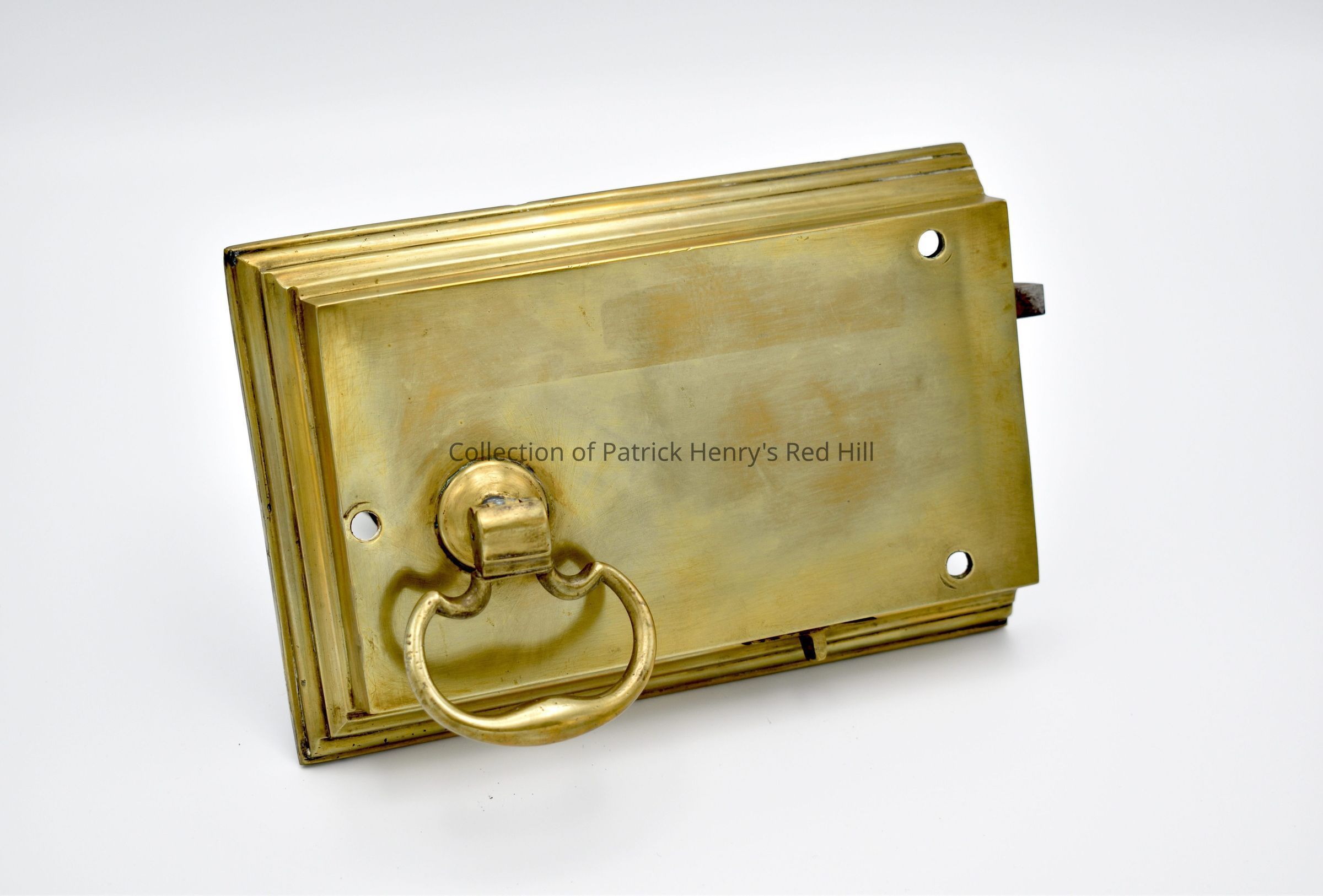Notes
This brass rim lock was one of seven bought using money received as payment for Patrick Henry's defense of Richard Randolph in a 1793 murder trial in which he was accused of murdering the newborn child of his sister-in-law.
In 1792, Richard Randolph, his wife Judith, his brother Theodorick, and Theodorick's fiancée Nancy Randolph, all between the ages of 18 and 22, were living together at Bizarre plantation in Cumberland County, Virginia. After Theodorick's death in February 1792, Nancy appeared to be pregnant, an unfortunate situation for an elite young lady without a fiancé to rescue her from public disgrace.
In October 1792, the surviving trio and Richard's younger brother John visited Glentivar, the home of their cousins, Randolph and Mary Harrison. During the night, footsteps were heard going down the stairs and returning, which were believed to be Richard’s. Mary Harrison discovered bloodstains on the stairs and Nancy’s pillowcases the next day. It was believed Nancy gave birth overnight, but the newborn was missing. The enslaved people showed bloodstains on a pile of wooden shingles and claimed that was where the infant’s body was left, but no body was ever found. It was presumed Richard had killed the baby and disposed of its remains.
Richard was brought before an examination court for murder in April 1793 before 16 justices, with Patrick Henry and John Marshall as their attorneys. There are no extant records of the proceedings, but many notes from Marshall have helped reconstruct it. Marshall and Henry argued that there was insufficient evidence and destroyed the prosecution's credibility; the justices agreed and acquitted the Randolphs. After the successful verdict, Henry is said to have been given the locks to use on his home, first at Long Island in Campbell County and then at Red Hill.
The earliest written documentation for these locks appears in an article of the "News and Advance" on March 29, 1898: "The tall mantels and brass locks alone show its colonial character. These locks, with large handles like knockers, are of especial interest, as they represent a fee paid to Henry for services in a celebrated trial, in the shape of an order on a hardware merchant." Only one lock seems to have been recovered from a fire that destroyed the Red Hill mansion in 1919. At that time, the mansion and lock were owned by Patrick Henry's great-granddaughter, Lucy Gray Henry Harrison (1857–1944). In September 1919, Lucy Harrison offered to donate the lock to the Valentine Museum in Richmond; however, this donation did not occur.
At some point, the lock passed to Lucy Harrison's second cousin once removed, Edward McCue Henry (1901–1984), a great-great-grandson of Patrick Henry. Edward Henry was the son of Dandridge Yuille Henry (1869–1950), who descended from Patrick Henry's second-youngest son, Edward Winston Sr. (1794–1872). Edward Winston owned Windstone plantation, which formerly stood east of Red Hill.
Edward McCue Henry donated the lock to the PHMF on December 8, 1977.
